The Mediterranean diet has been widely recognized for its health benefits, particularly in promoting heart health and aiding in weight management. When tailored to exclude gluten, the diet becomes a viable option for individuals with celiac disease or non-celiac gluten sensitivity. Gluten, a protein found in wheat, barley, and rye, can trigger harmful reactions in these individuals; hence, a gluten-free Mediterranean diet emphasizes naturally gluten-free whole grains, like quinoa and rice, along with ample fruits, vegetables, legumes, nuts, seeds, and healthy fats like olive oil.
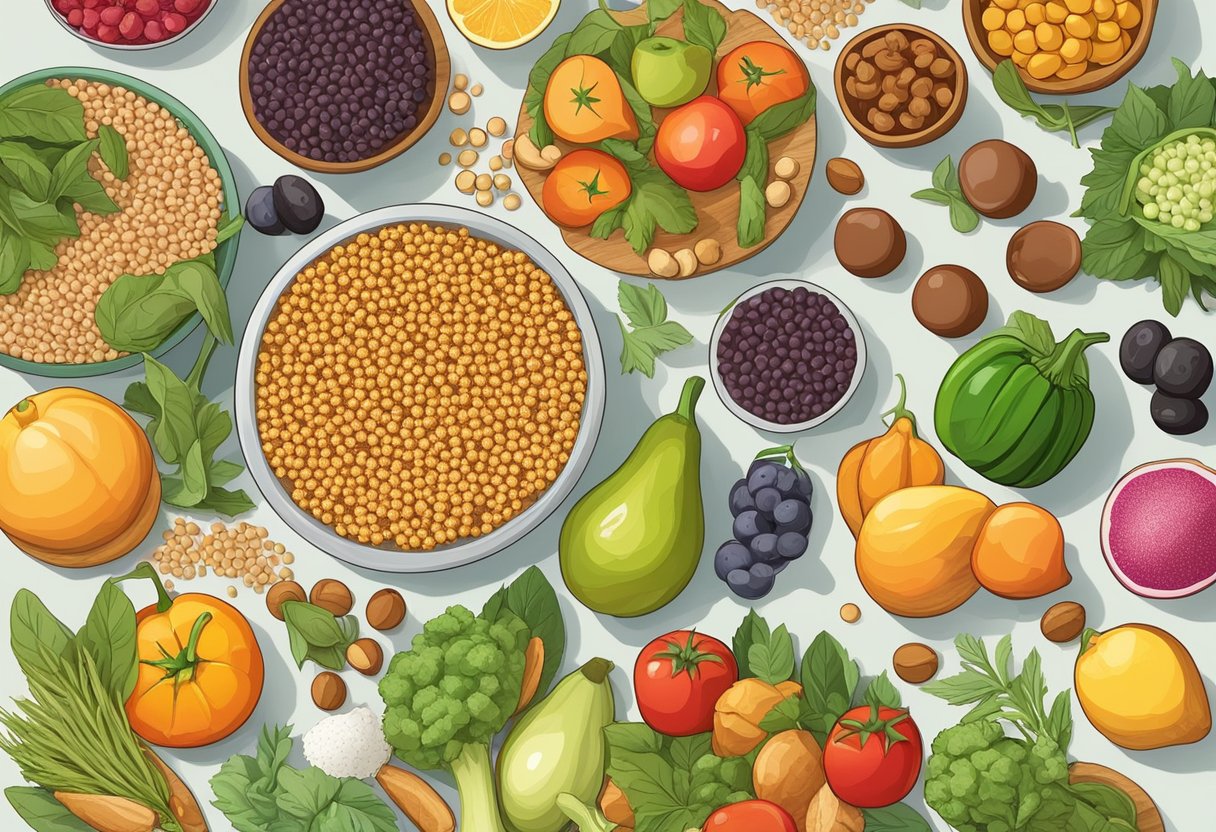
Balancing carbohydrates on a gluten-free Mediterranean diet requires thoughtful inclusion of these whole grains to ensure that dietary fiber and essential nutrients typically provided by gluten-containing grains are not lacking. Rich in complex carbohydrates, the diet supports sustained energy levels throughout the day while avoiding the refined sugars and processed foods that are often implicated in health issues. Preparing balanced meals with adequate protein from legumes, fish, and poultry, and incorporating a variety of fruits and vegetables, ensures that the diet remains both nutritious and satiating.
Key Takeaways
- A gluten-free Mediterranean diet offers heart health benefits and accommodates those with celiac disease.
- Whole grains are important for balancing carbohydrates and providing necessary nutrients.
- Meals combine protein, healthy fats, and diverse produce to maintain a well-rounded diet.
Table of Contents
Essentials of the Gluten-Free Mediterranean Diet
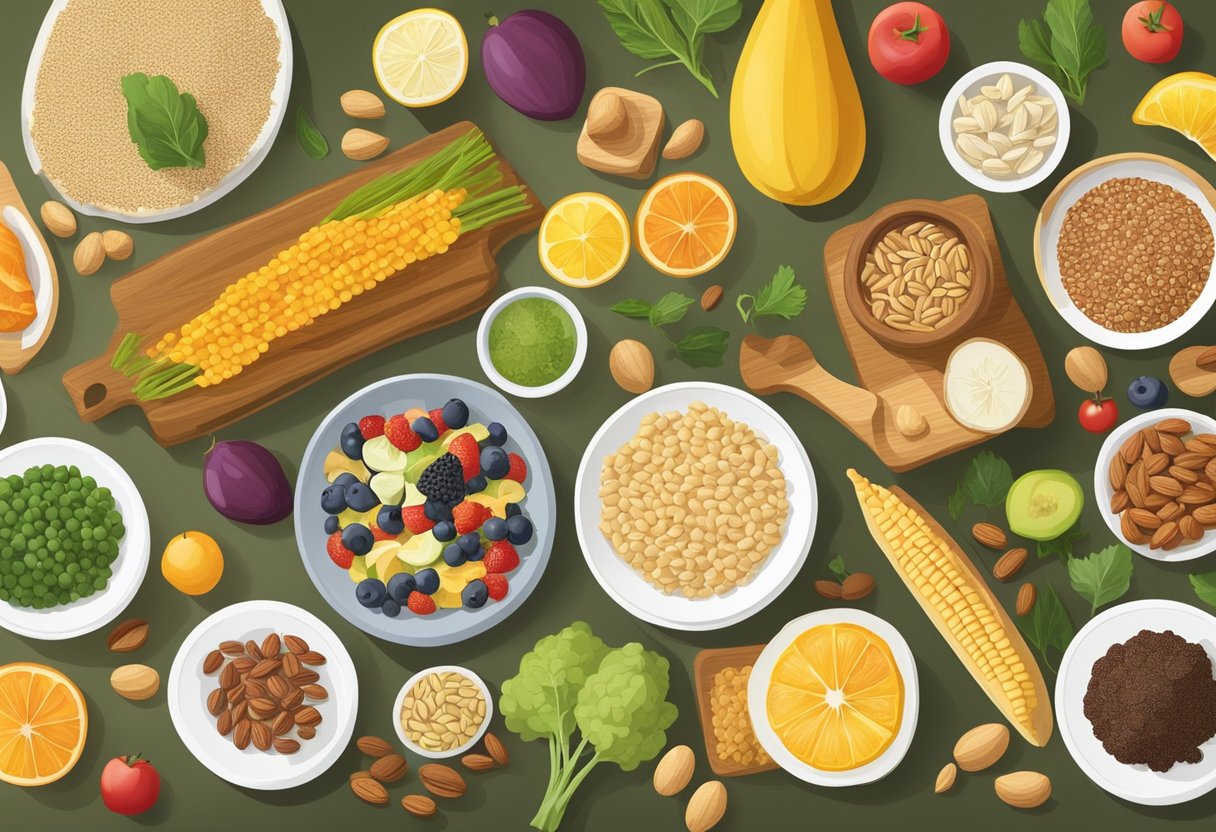
Incorporating the principles of the Mediterranean diet with a gluten-free lifestyle can lead to a nutritious balance of carbohydrates, emphasizing whole foods and healthy fats.
Defining a Gluten-Free Mediterranean Diet
A gluten-free Mediterranean diet includes the traditional healthy living habits of people from countries bordering the Mediterranean Sea, with an emphasis on consuming gluten-free whole grains. This diet excludes all sources of gluten, which is beneficial for individuals with celiac disease or gluten sensitivities.
Key Components of the Diet
The foundation of the diet is built on:
- Gluten-Free Whole Grains: Quinoa, brown rice, and buckwheat.
- Healthy Fats: Predominantly olive oil is used for cooking and dressings.
- Nuts and Seeds: Almonds, chia seeds, and flaxseeds are included for their nutrients and fiber.
- Protein Sources: A variety of fish and legumes are consumed regularly.
- Produce: A high intake of vegetables and fruits provides vitamins, minerals, and fiber.
Each ingredient is carefully selected to ensure it is free of gluten while contributing to the balance of nutrients in the diet.
Health Benefits of Mediterranean Eating Patterns
The gluten-free Mediterranean diet is associated with numerous health benefits, including:
- Cardiovascular Health: The high levels of omega-3 fatty acids from fish and healthy fats from nuts, olive oil, and seeds support heart health.
- Weight Management: High fiber content from gluten-free whole grains, fruits, and vegetables can lead to satiety and aid in maintaining a healthy weight.
- Reduced Inflammation: Gluten-free options help reduce the inflammatory response for those with sensitivities, while the overall diet promotes reduced inflammation throughout the body.
By emphasizing unprocessed foods and balanced nutrition, individuals can enjoy the well-studied advantages of Mediterranean eating patterns without the risks posed by gluten.
Understanding Gluten and Celiac Disease
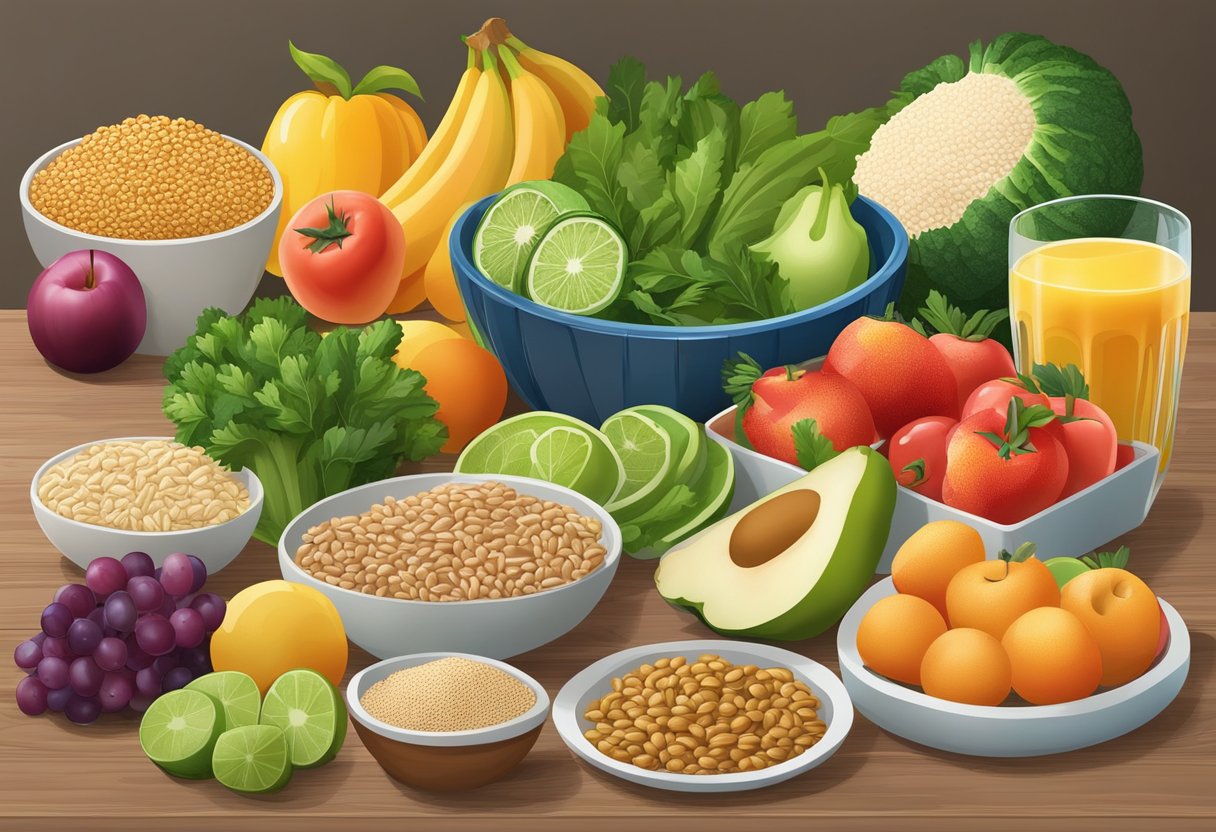
The following section provides a concise understanding of gluten, its effects on individuals with celiac disease or gluten sensitivity, and safe alternatives for a gluten-free regimen, which is particularly significant for individuals looking to balance carbohydrates on a Gluten-free Mediterranean Diet.
What is Gluten?
Gluten is a family of proteins found primarily in wheat, barley, and rye. It’s known for its elasticity and chewiness in breads and its ability to help foods maintain their shape. While beneficial in food processing, gluten can cause adverse health effects in susceptible individuals.
Celiac Disease and Gluten Sensitivity
Celiac disease is an autoimmune disorder where the ingestion of gluten leads to damage in the small intestine. Gluten sensitivity, while less severe, still causes discomfort. Symptoms can range from digestive issues to neurological problems. Both conditions necessitate the strict avoidance of gluten.
Safe Gluten-Free Alternatives
For those with celiac disease or gluten sensitivity, choosing safe gluten-free alternatives is crucial. Gluten-free grains such as quinoa, buckwheat, and amaranth are not only safe but also fit well within the Mediterranean diet, offering essential nutrients and fiber without the gluten found in traditional grains.
Incorporating Whole Grains in Your Diet
In a gluten-free Mediterranean diet, whole grains provide essential nutrients without compromising gluten sensitivity. Here’s how one can integrate them effectively.
Gluten-Free Grain Options
For those following a gluten-free diet, the selection of whole grains may seem limited, yet there are plenty of nutritious alternatives. Gluten-free whole grains such as quinoa, buckwheat, brown rice, and sorghum offer versatility and are packed with dietary fiber. These grains are also connected with multiple health benefits, including improved digestion and reduced risk of chronic diseases.
Preparing and Cooking Whole Grains
Preparing these gluten-free options doesn’t have to be daunting. Here is a brief overview for cooking some of the popular gluten-free whole grains:
- Quinoa: Rinse thoroughly and cook one part quinoa to two parts water, bringing to a boil and then simmering for 15-20 minutes.
- Buckwheat: With a similar method to quinoa, buckwheat requires two cups of water for every one cup of buckwheat groats.
- Brown Rice: Typically, brown rice requires about two and a half cups of water per cup of rice and should be simmered for around 45 minutes.
- Sorghum: This grain can be soaked overnight and boiled in three parts water for one part sorghum, for about 50-60 minutes or until tender.
Each grain offers a distinct texture and nutty flavor, adding richness to a variety of dishes.
Grains to Avoid on a Gluten-Free Diet
It is crucial for individuals on a gluten-free diet to avoid grains that contain gluten. Common grains to avoid include wheat, barley, and rye. Additionally, caution should be exercised with oats, as they are often processed in facilities that also handle wheat, leading to cross-contamination. It is important to only consume oats that are certified gluten-free to ensure they are safe for consumption.
Designing a Balanced Meal Plan
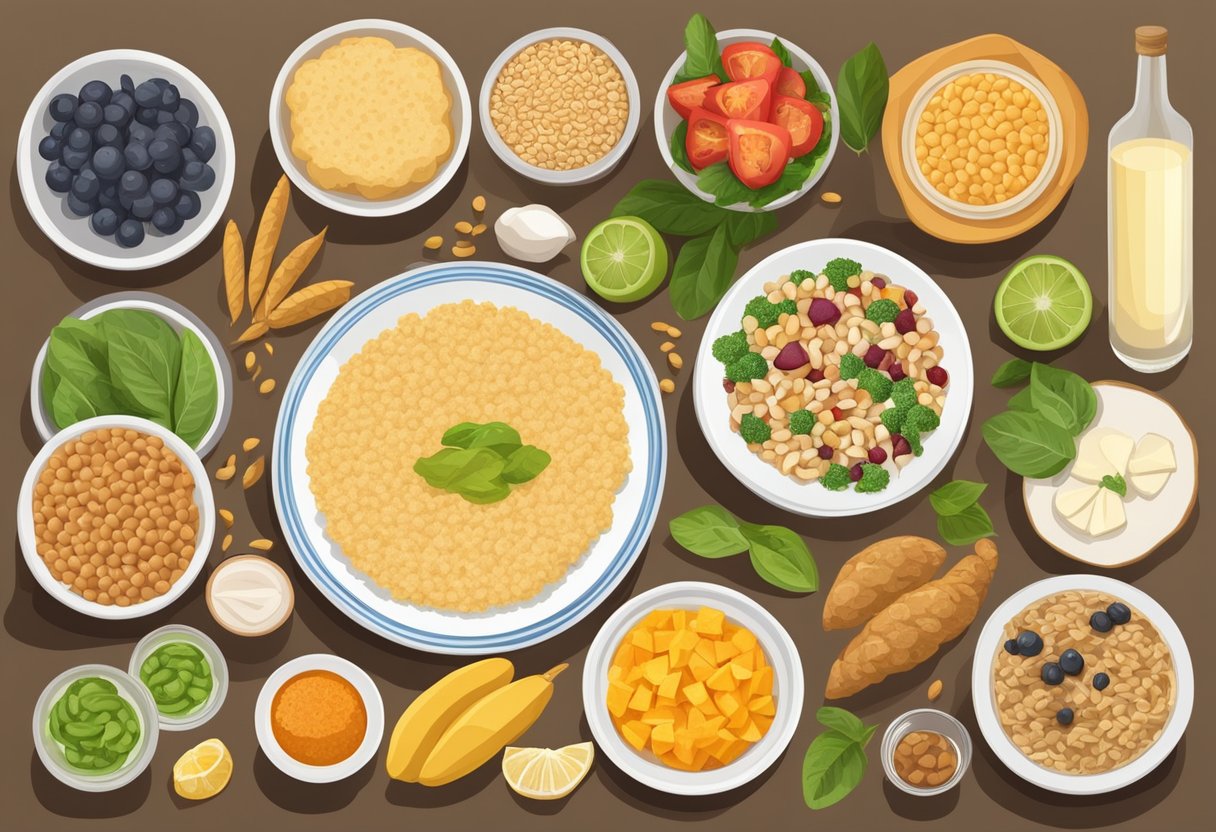
When transitioning to a gluten-free Mediterranean diet, it is crucial to create a meal plan that incorporates diverse food options, offers a rich array of recipes, and provides balanced nutritional value, while ensuring the guidance of a professional in the field is sought.
Creating a Diverse Meal Schedule
To avoid monotony and ensure a wide range of nutrients, each day should include a variety of food groups pertaining to the Mediterranean diet’s principles. A balanced meal plan should typically comprise:
- Breakfast: A mix of protein, fruits, and gluten-free grains. For example, yogurt with mixed berries and gluten-free oatmeal.
- Lunch: Leafy greens, a portion of protein such as fish or legumes, and healthy fats like olive oil.
- Dinner: A lighter meal with vegetables, whole grains such as brown rice or quinoa, and lean protein.
This structure promotes consistent energy levels and a good balance of macronutrients.
Recipe Inspiration and Ideas
It can be helpful to pull from a trove of Mediterranean recipes like those found in a comprehensive meal plan on Abra’s Kitchen or Celiac Foundation’s 7-day meal plan to keep each meal fresh and exciting. Examples include:
- Quinoa Tabbouleh: A high-fiber, nutrient-packed salad for lunch.
- Grilled Salmon with a Lemon Olive Oil Drizzle: Offering omega-3s and important minerals for dinner.
Creating a rotating roster of dishes promotes both variety and adequate nutrient intake.
Consulting with a Registered Dietitian
Working with a registered dietitian experienced in both gluten-free and Mediterranean diets is invaluable. They can help tailor a meal plan that meets individual needs for calories, vitamins, and minerals, while also reinforcing the principles of an anti-inflammatory and balanced diet. Dietitians can provide insights unique to one’s health profile, such as calorie needs for weight management or specific nutrient needs for health conditions. It’s important that individuals endeavor to follow professional advice to ensure their dietary choices align with their personal health goals.
Nourishing the Body with Fruits and Vegetables
Incorporating a wide range of fruits and vegetables is essential for anyone following a gluten-free Mediterranean diet. These nutrient-dense foods contribute significant fiber, vitamins, minerals, and antioxidants, which are pivotal for maintaining good health and managing weight.
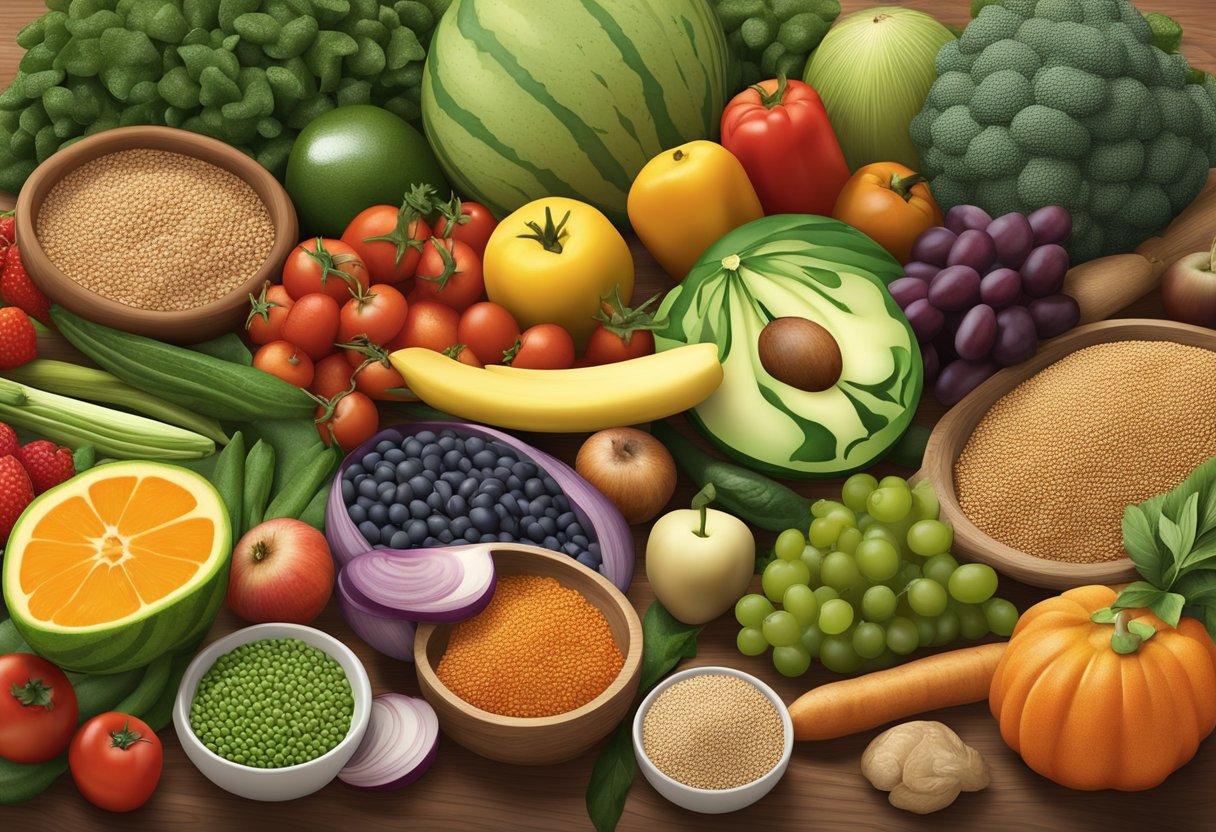
Daily Servings and Variety
One should aim for a minimum of five servings of fruits and vegetables daily, with an emphasis on variety. Leafy greens, for example, are an excellent source of vitamins A, C, K, and minerals like iron and calcium. Including berries and cherry tomatoes not only adds different flavors and textures but also ensures a broader spectrum of nutrients. This variety guarantees that the body receives a multitude of bioactive compounds that support overall health.
Role in Disease Prevention
Fruits and vegetables possess powerful antioxidants that combat inflammation, a key factor in chronic disease development. A diet rich in these components can help prevent conditions such as heart disease and diabetes. Furthermore, the high fiber content in plant-based foods aids in digestion and can promote weight loss by increasing the feeling of fullness and reducing overall calorie intake.
The Role of Healthy Fats and Oils
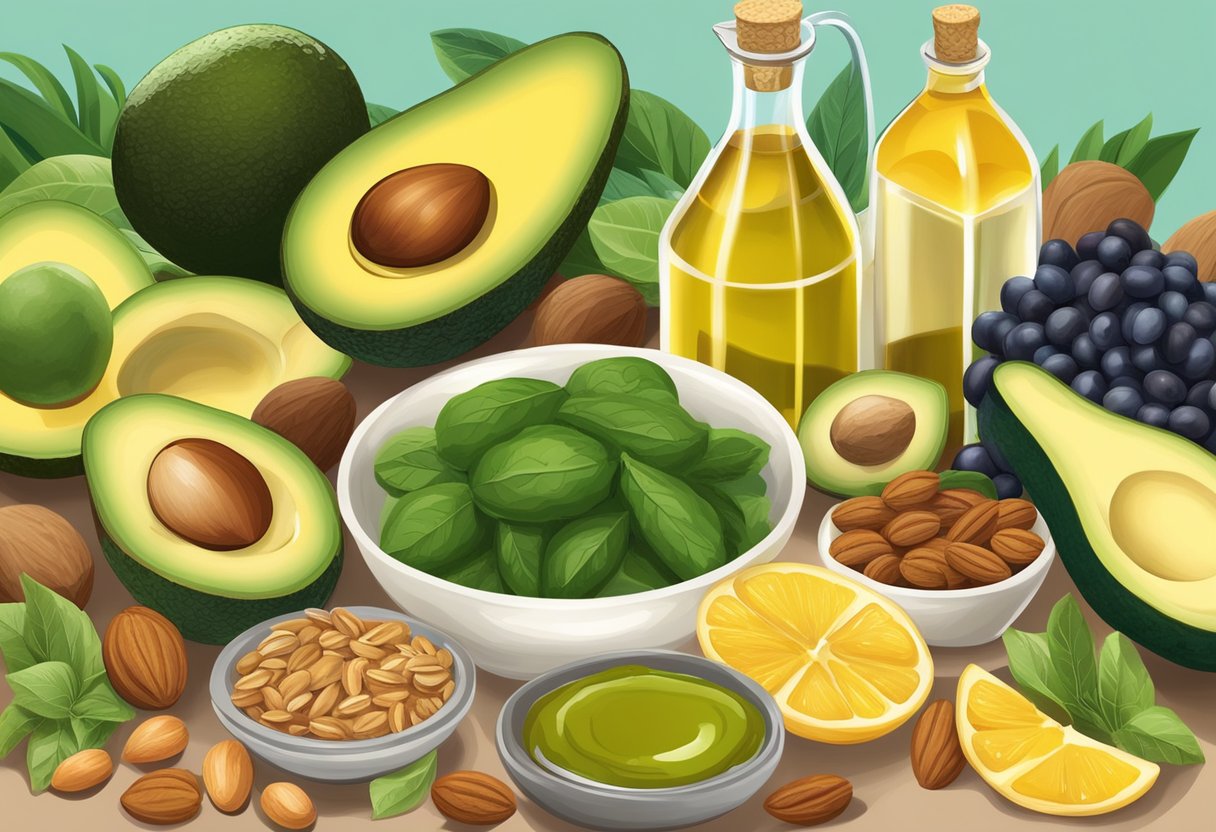
In a balanced gluten-free Mediterranean diet, the inclusion of healthy fats and oils is crucial for maintaining heart health and reducing inflammation associated with chronic diseases.
Identifying Healthy Fat Sources
Olive oil, particularly extra-virgin olive oil, stands out as a key component of the Mediterranean diet, lauded for its anti-inflammatory properties and association with reducing the risk of heart disease and stroke. Other sources of healthy fats include:
- Avocado: Offers monounsaturated fats and may help manage blood sugar levels, supporting individuals with type 2 diabetes.
- Nuts and Seeds: Almonds, walnuts, flaxseeds, and chia seeds contribute both mono- and polyunsaturated fats while being gluten-free.
- Salmon: This fatty fish is rich in omega-3 fatty acids, vital for cardiovascular health and preventing chronic disease.
Balancing Fat Intake
Incorporating these sources of healthy fats should be done thoughtfully, balancing their intake with lean proteins and plenty of vegetables, typical for a gluten-free Mediterranean diet. A few examples for daily fat intake include:
- Drizzle olive oil on salads or vegetables.
- Incorporate avocado into meals as a dietary fat instead of butter.
- Add a moderate amount of nuts and seeds to morning yogurt or cereal.
- Opt for salmon or other fatty fish twice a week to maintain a diet supportive of cardiovascular health.
Protein Sources and Legumes in the Diet
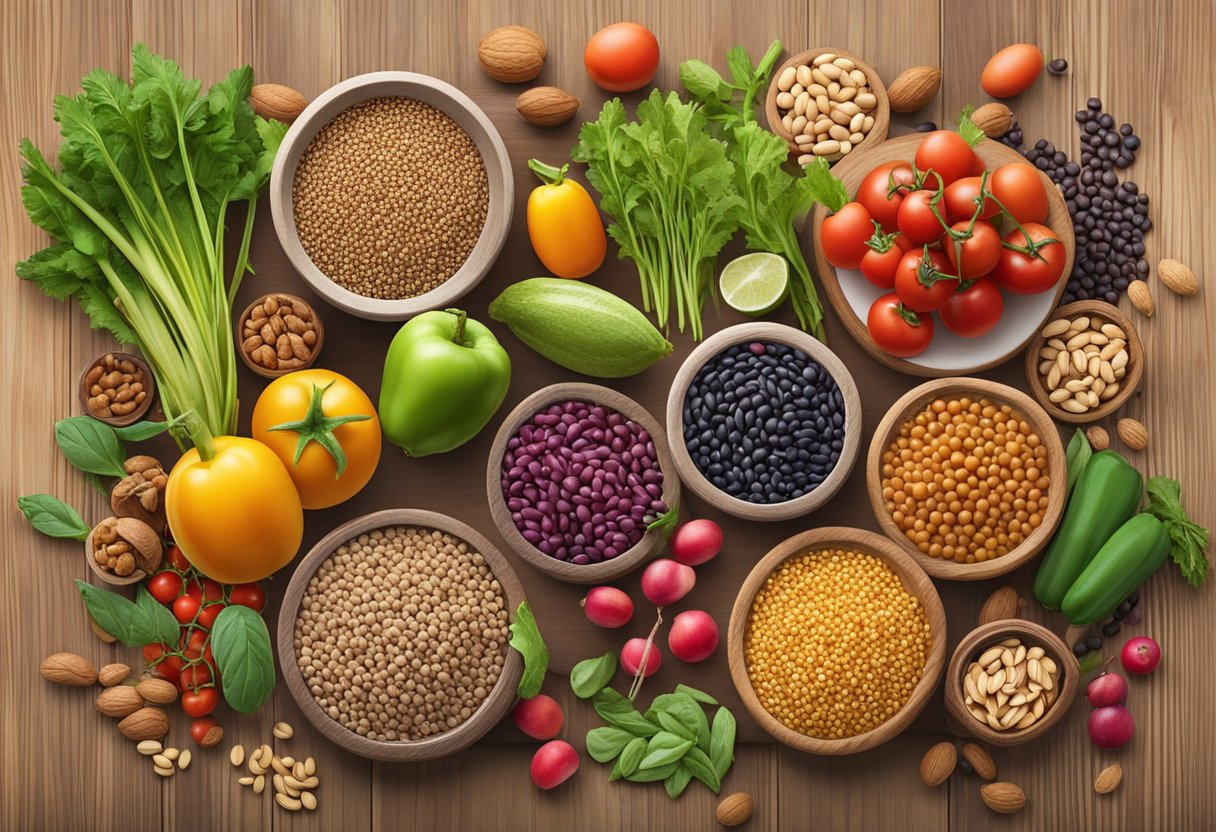
Protein is a critical macronutrient in any diet, and for those following a gluten-free Mediterranean diet, there are a variety of sources that can help balance carbohydrates with valuable proteins and fats. Legumes, in particular, offer an abundance of protein and nutrients while adhering to the diet’s principles.
Incorporating Plant-Based Proteins
Legumes such as beans, lentils, and chickpeas are staples in the gluten-free Mediterranean diet, providing not only protein but also fiber and essential nutrients. These plant-based proteins are celebrated for their anti-inflammatory properties, which play a role in reducing the risk of chronic diseases. A simple yet effective way to incorporate these into meals is by preparing:
- Salads with a mix of black beans or chickpeas.
- Soups with a lentil base for a wholesome protein kick.
Alongside legumes, nuts and seeds are also integral to the diet. They add a crunchy texture and a dose of healthy fats to any dish, making them perfect for snacking or as a garnish.
Choosing Lean Animal Proteins
When it comes to animal proteins, the emphasis is on lean options like poultry and fish, which should be consumed in moderation. Fish, particularly those rich in omega-3 fatty acids like salmon, is highly recommended due to its protein content and heart-health benefits. Poultry, such as chicken or turkey, can be grilled or baked for a healthy addition to meals.
While red meat is not a primary focus, it’s not entirely excluded; it should be consumed less frequently, with a preference for grass-fed and lean cuts. Eggs, dairy, cheese, and yogurt are also part of the diet, providing high-quality protein and calcium. They should be chosen with an eye for low-fat and high-protein options to maintain balance in the diet. Here’s a brief outline of animal-based proteins that can be included:
- Fish: aim for two to three servings per week.
- Poultry: incorporated into meals a few times weekly.
- Red meat: limited to occasional consumption.
- Dairy: choose options like Greek yogurt for a high-protein, low-sugar choice.
Dressing and Flavoring with Herbs and Spices
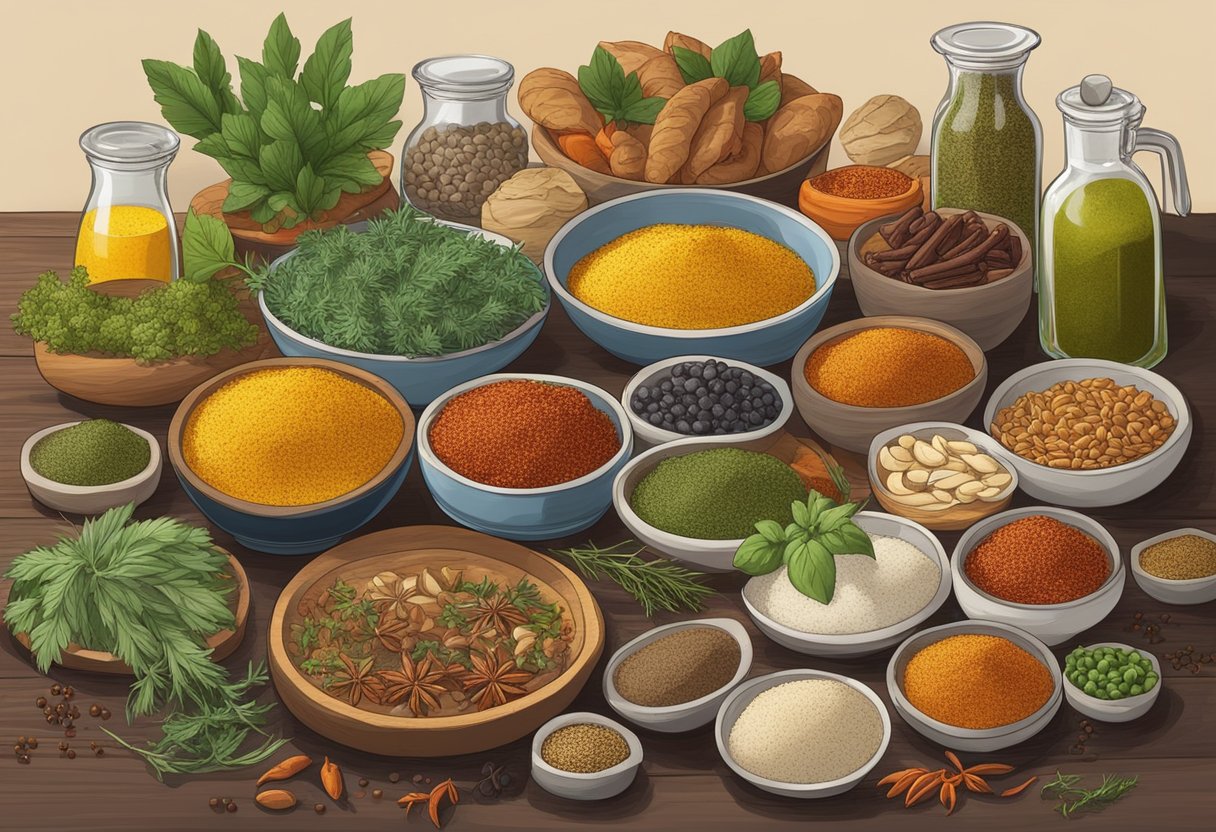
On the gluten-free Mediterranean diet, one can create flavorful, aromatic dishes by incorporating a variety of herbs and spices, which serve to elevate meals without the need for gluten-containing additives.
Enhancing Meals Without Gluten
Dressings and marinades rich in herbs and spices are essential for individuals following a gluten-free Mediterranean diet. They infuse dishes with complexity and depth. For example, dressings with garlic and olives add a robust flavor to salads without relying on gluten for texture or taste. Gluten-free recipes often use blends of oregano, basil, thyme, and rosemary to authentically season dishes while preserving the integrity of the diet.
Health Benefits of Herbs and Spices
In addition to their flavoring properties, herbs and spices offer numerous health benefits. Many are known for their anti-inflammatory effects, with spices like turmeric and ginger being particularly notable. These ingredients can help support a healthy inflammatory response in the body. Furthermore, the inclusion of cinnamon in one’s diet can have a favorable effect on blood sugar levels, which is critical for those who must manage their carbohydrate intake on a gluten-free diet.
Healthy Snacking and Moderation

When incorporating snacks into a gluten-free Mediterranean diet, it’s crucial to choose nutrient-dense options and be mindful of serving sizes. These strategies help maintain blood sugar levels and support weight management.
Gluten-Free Snacking Options
Snacking can be a healthy part of any diet when one chooses nourishing foods and pays attention to their body’s hunger signals. Gluten-free seeds and nuts are excellent for snacking because they provide a rich source of protein, fiber, and healthy fats. Some popular choices include:
- Almonds
- Sunflower seeds
- Pumpkin seeds
- Walnuts
For a sweet tooth, fresh fruits like apples, berries, and citrus are advisable as they are high in vitamins, fiber, and antioxidants. Consequently, they contribute to the nutritional profile of a gluten-free Mediterranean diet without added sugars or preservatives.
Vegetables also make for excellent snacks. Bell pepper slices, carrot sticks, and cucumber rounds can be dipped in hummus or paired with a slice of cheese to balance flavors and nutrients. Store-bought gluten-free crackers can be a convenient option, but be sure to check the labels for whole food ingredients to stay in line with Mediterranean diet principles.
The inclusion of moderate amounts of dairy—like Greek yogurt and a variety of cheeses—offers an additional boost of protein, assisting in prolonging satiety and managing hunger pangs between meals.
Understanding Portion Sizes
Portion control is vital, especially when snacking. Too much of a healthy snack can still contribute to excessive calorie intake. Here’s a brief guide on approximate portion sizes for gluten-free Mediterranean diet snacks:
- Nuts: A handful, or roughly 1 ounce (28 grams)
- Seeds: 2 tablespoons
- Fruits: 1 medium piece or 1 cup of berries
- Vegetables: 1 cup raw or 1/2 cup cooked
- Cheese: 1 ounce (size of a matchbox)
- Yogurt: 1 small container or 1 cup
Recognizing proper portion sizes helps prevent overeating, which is especially important for individuals managing diabetes, attempting weight loss, or concerned about obesity. Eating in moderation delivers the necessary nutrients without consuming too many calories and helps in keeping blood sugar levels stable.
Frequently Asked Questions
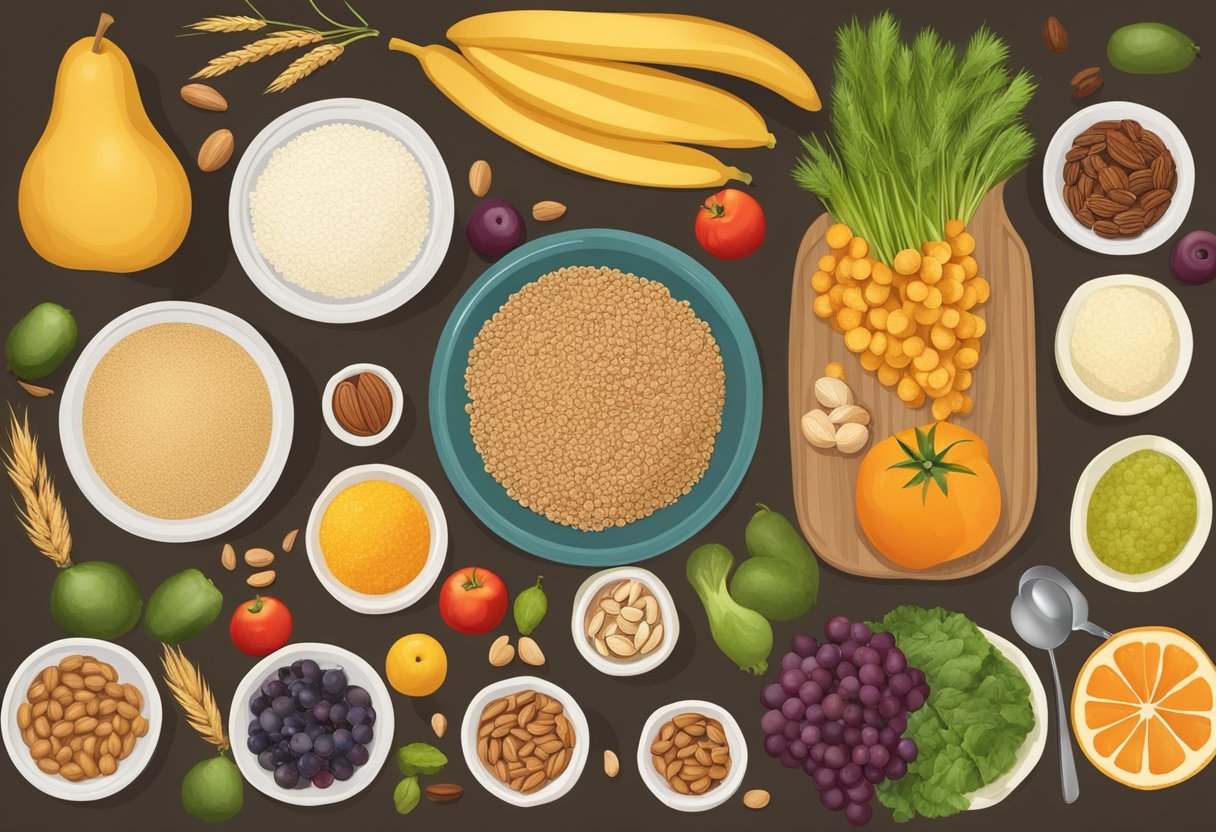
The following questions address key aspects of incorporating gluten-free carbohydrates into a Mediterranean diet, ensuring a balanced approach to meeting nutritional needs.
What are some gluten-free carbohydrate options suitable for a Mediterranean diet?
Gluten-free carbohydrate options that complement a Mediterranean diet include quinoa, buckwheat, and brown rice. These grains offer versatility and can be used in salads, as side dishes, or in grain bowls.
How can you adapt traditional Mediterranean meals to be gluten-free while maintaining balanced carbohydrate intake?
Adapting traditional Mediterranean meals to be gluten-free involves substituting gluten-containing grains with gluten-free alternatives like mil



